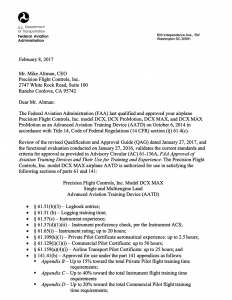Part 61 vs 141: Choosing the Best Flight Training Program

If you’re considering a career in aviation, one of the first decisions you’ll need to make is which flight training program to pursue. Two popular options in the United States are Part 61 and Part 141. Both have their own unique benefits and it’s important to understand the differences between the two before making a decision. here , we’ll explore the differences between the two and help you decide which one is best for you.
The Basics of Part 61
Part 61, also known as Title 14 Code of Federal Regulations (CFR) Part 61, is the more traditional flight training program. This program is designed for individual pilots looking to obtain their private or commercial pilot’s license. Under Part 61, students work with a Certified Flight Instructor (CFI) to complete the necessary flight hours and pass the required exams.
While it may seem simple, Part 61 offers a lot of flexibility for students. You can train at your own pace and don’t need to follow a strict syllabus. This can be beneficial here for those who need to balance flight training with other commitments, such as a full-time job or family responsibilities.
The Benefits of Part 141
On the other hand, Part 141, also known as Title 14 CFR Part 141, is a structured and rigorous flight training program. This program is designed for students aiming for a commercial pilot’s license or advanced ratings. The key difference between Part 61 and 141 is that under Part 141, flight schools must adhere to an approved syllabus and meet specific training requirements set by the Federal Aviation Administration (FAA).
One of the major benefits of Part 141 is the accelerated training timeline. Since the curriculum is standardized, students can complete their training in a shorter amount of time compared to Part 61. This can be advantageous for those looking to enter the aviation industry quickly.
The Cost Factor
When it comes to cost, Part 61 and Part 141 programs can differ significantly. Generally, Part 141 is more expensive as it requires students to complete a set number of flight hours and follow a strict syllabus. On the other hand, Part 61 can be more budget-friendly as you only pay for the flight hours you need to meet the FAA requirements.
It’s also important to consider that the cost of flight training can vary depending on the flight school, location, and aircraft used. So, it’s important to do your research and compare costs before making a decision between Part 61 and 141.
The Quality of Training
At the end of the day, the key factor to consider when choosing between Part 61 and Part 141 is the quality of training. While both programs are regulated by the FAA, it ultimately depends on the flight school and CFI you choose. Research the reputation and success rate of the flight school and instructors to ensure you’re receiving top-notch training.
Remember that both programs have their advantages and disadvantages. Part 61 offers flexibility, while Part 141 provides a structured curriculum. The best approach is to carefully evaluate your personal needs and goals to determine which program will best suit you.
Which One Is Right for You?
Ultimately, the decision between Part 61 and Part 141 comes down to your individual needs and goals. If you value flexibility and are able to dedicate more time to flight training, then Part 61 may be the better option for you. However, if you’re looking for a structured program and want to become a commercial pilot or acquire advanced ratings quickly, then Part 141 may be the way to go.
Remember that your flight training journey is unique and choosing the right program can make all the difference. So, take the time to do your research, talk to current or former students, and consult with experienced pilots to help guide your decision.

In Conclusion
In the end, whether you choose Part 61 or 141, it’s important to approach your flight training with dedication, passion, and a positive attitude. With hard work and determination, you’ll be soaring through the skies in no time. Happy flying!
